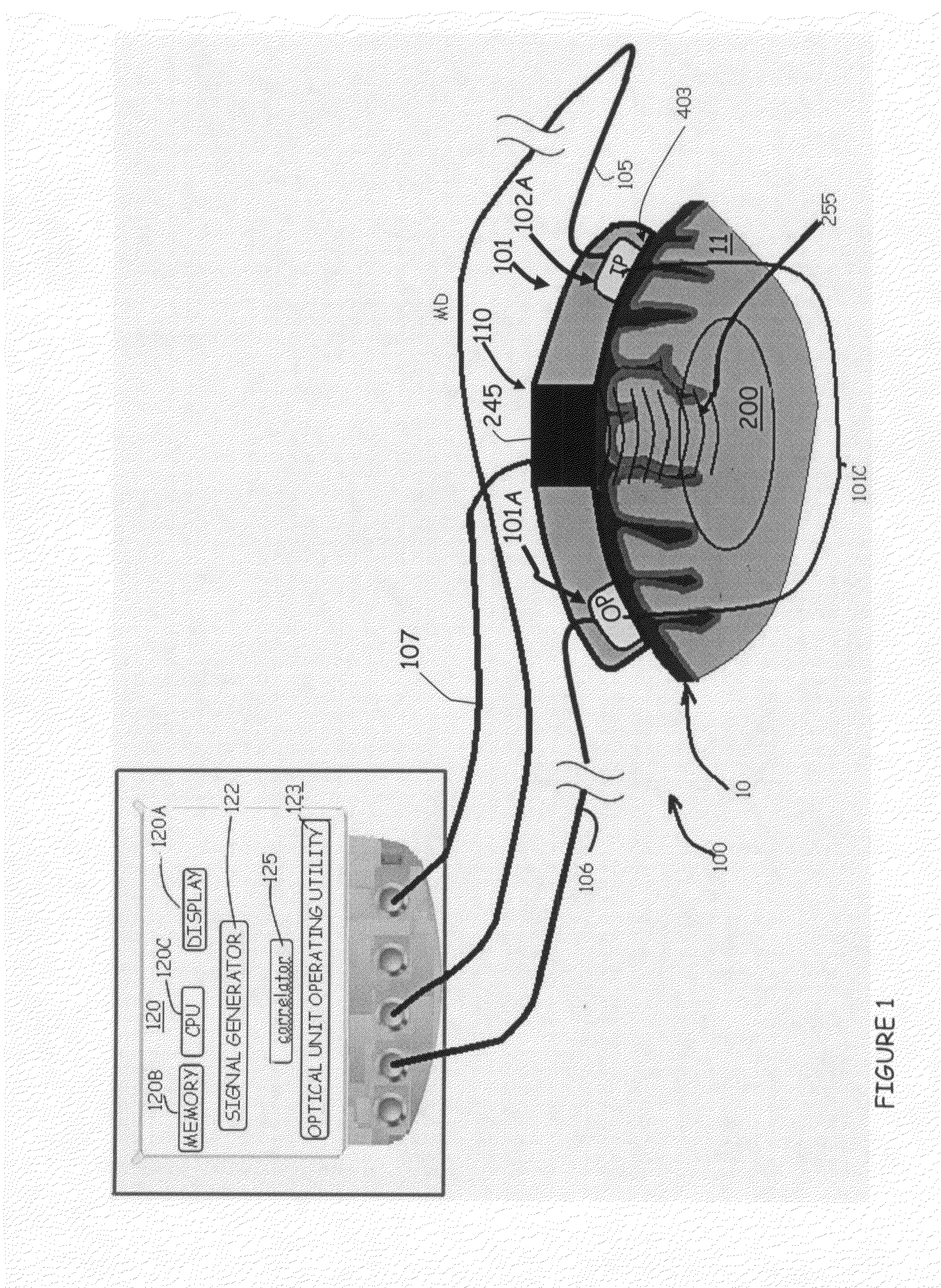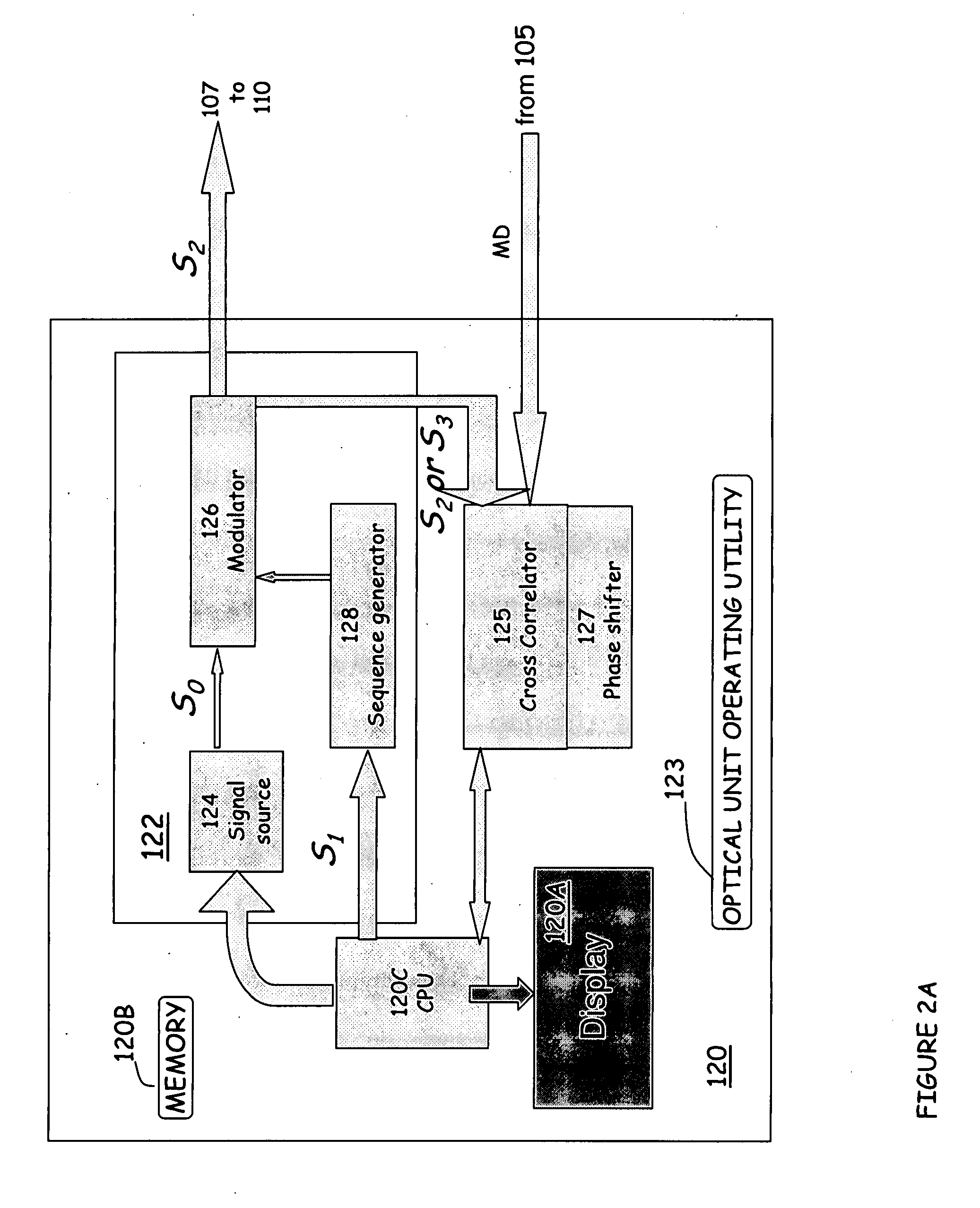System and method for noninvasively monitoring conditions of a subject
a non-invasive monitoring and condition technology, applied in mechanical audible signalling, radiation therapy, diagnostics using light, etc., can solve the problems of limiting the spatial resolution of the measurement produced by continuous acoustic waves, and the spatial resolution of the measurement produced by a continuous acoustic wave is not as high as the measurement produced, so as to improve the oximetry and pulse oximetry based measurement
- Summary
- Abstract
- Description
- Claims
- Application Information
AI Technical Summary
Benefits of technology
Problems solved by technology
Method used
Image
Examples
Embodiment Construction
[0037]Reference is made to FIG. 1 illustrating schematically a specific but not limiting example of a measurement system, generally designated 100, configured and operable according to the invention for non-invasive determination of one or more parameters (properties of tissue components) of a subject, particularly a human or animal body. The parameter(s) to be determined may include oxygen saturation level, or values / levels of various other parameters such as the concentration of an analyte in the patient's blood, or the perfusion of an analyte / metabolite in tissues. The values of these parameters are derived from the light distribution in a region of interest 200 as will be described below.
[0038]System 100 includes such main constructional parts as a measurement unit 101 and a control unit 120. Measurement unit 101 includes an optical or electromagnetic unit (module) 101C and an acoustic unit (module) 110. Optical module 101C includes an illumination assembly 101A and a light dete...
PUM
 Login to View More
Login to View More Abstract
Description
Claims
Application Information
 Login to View More
Login to View More - R&D
- Intellectual Property
- Life Sciences
- Materials
- Tech Scout
- Unparalleled Data Quality
- Higher Quality Content
- 60% Fewer Hallucinations
Browse by: Latest US Patents, China's latest patents, Technical Efficacy Thesaurus, Application Domain, Technology Topic, Popular Technical Reports.
© 2025 PatSnap. All rights reserved.Legal|Privacy policy|Modern Slavery Act Transparency Statement|Sitemap|About US| Contact US: help@patsnap.com



